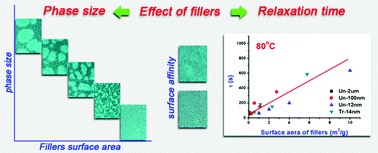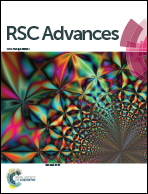Effect of size and content of mesoscopic fillers on the polymerization induced viscoelastic phase separation
Abstract
Fillers have great impact on the phase separation process and material properties of multi-component heterogeneous polymer composites. In this article, we have investigated the effect of surface affinity, size and content of mesoscopic fillers on the polymerization induced viscoelastic phase separation of thermoplastic modified thermosets by using optical microscopy, time-resolved light scattering, and dynamic mechanical analyses. Nanosized mesoscopic silica type fillers, both surface treated and untreated, showed significant enhancement effect on the viscoelastic phase separation of polyethersulfone modified epoxy resins with dynamic asymmetry, which resulted in a clear decrease of characteristic length scale of phase structure and an increase of relaxation time of phase separation. With increase of filler size from nanoscale to micron-size, the “enhanced viscoelastic effect” of fillers at the same content diminished quickly as both the phase evolution process and the size of phase structure shifted to those of blends without fillers. While increase of the content of fillers showed an enlarged enhancement effect on viscoelastic phase separation. Glass transition temperatures of filled blends with various filler contents and sizes obtained from dynamic mechanical study were consistent with the phase separation study.


 Please wait while we load your content...
Please wait while we load your content...